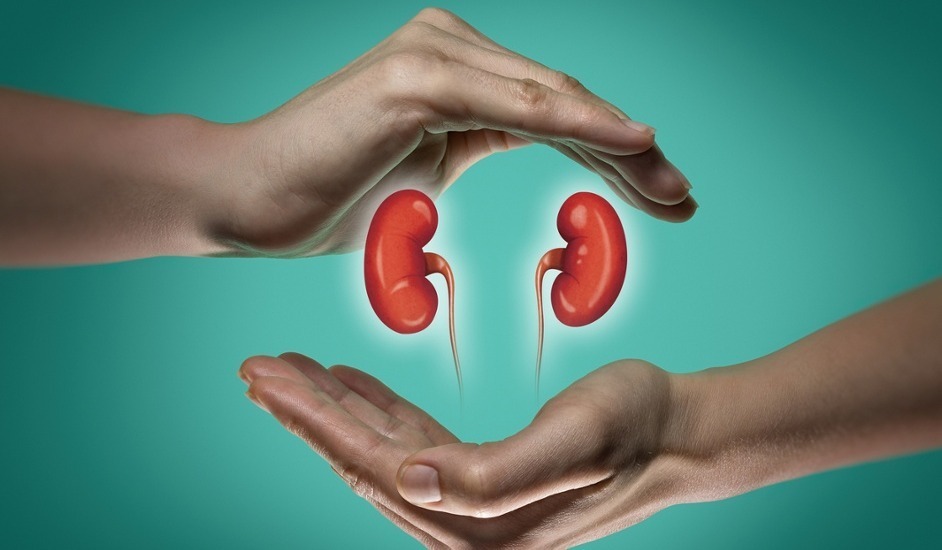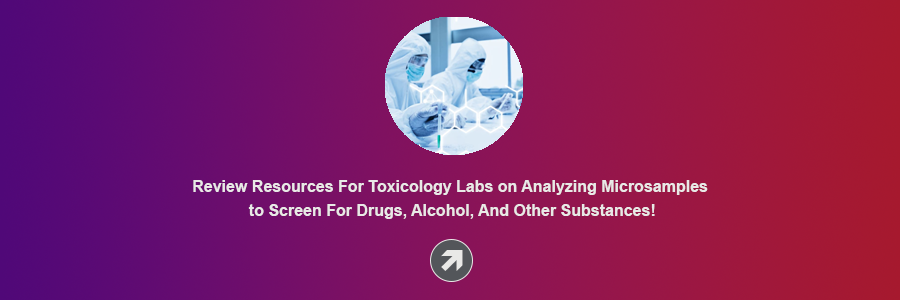Share this
using VAMS to measure drug level and renal function
by James Rudge, PhD, Technical Director, Trajan on Mar 21, 2022 9:00:00 AM
An article by David J Marshall and Brian G Keevil et al at Wythenshawe Hospital and Nottingham Hospital, UK that was published in the July 2020 issue of Annals of Clinical Biochemistry, reported on a simultaneous extraction method for analysis of tacrolimus and creatinine from one 10 µL VAMS tip on a Mitra device.
Mitra microsampling devices are portable and can be used by study participants at home to self-collect blood samples and mail them to the research lab for analysis.
The paper summarized here is entitled “Assessment of tacrolimus and creatinine concentration collected using Mitra microsampling devices.” It describes a method where capillary dried blood samples collected on Mitra® devices based on VAMS® technology were compared to 135 venous serum (creatinine) samples, and venous wet blood (tacrolimus) samples that had been collected from transplant patients.
Both analytes showed minimum assay bias comparing capillary blood samples on Mitra to the traditional samples. The team commented that the method they had developed “could open up the opportunity for patients to perform tacrolimus and kidney function monitoring at home.”
Objective of the Renal Function & Therapeutic Drug Monitoring (TDM) Study
Development and validation of an LC-MS/MS method for creatinine and tacrolimus on Mitra devices with VAMS for monitoring renal transplant patients.
Monitoring Renal Transplantation Patients
In 2017 it was reported that in the US alone there were 220,000 surviving transplant renal patients and that these patients require regular medication to prevent organ rejection. As discussed in a previous blog, one of the most popular medications available to prevent graft loss is the calcineurin inhibitor, tacrolimus.
Like all calcineurin inhibitors, tacrolimus requires therapeutic drug monitoring (TDM). This monitoring is necessary to measure drug concentration level in patients to ensure optimal efficacy, due to the narrow therapeutic window of tacrolimus.
However, measuring drug level alone does not monitor the healthy function of the graft, it simply tracks a patient’s medical adherence and ensures that the drug is titrated to an appropriate level for each individual. To monitor the health of the transplanted kidney, it is also critical to routinely monitor renal function. This can be achieved with a simple blood test.
A popular renal function biomarker is creatinine (often excreted by muscle tissue), a breakdown product of the amino acid, creatine. As kidney function declines, serum creatinine concentration increases. Indeed, according to the Beaumont Hospital Kidney Centre in Dublin, Ireland, a “very well- functioning renal transplant should have a serum creatinine of around 100 to 120 µmol/L.”
The causes of elevated creatinine levels can include issues with the flow of urine from the kidney to the bladder, too high a level of tacrolimus (or of other similar medications), graft rejection, stenosis of the transplant artery, polyoma virus infection, or a reoccurrence of the original cause of renal failure.
According to the paper by Marshall and Keevil et al, historically renal transplant patients have had to regularly attend clinics to monitor their kidney function and drug levels.
These onsite clinic visits require burdensome travel and time away from work or school. Furthermore, the authors commented that onsite monitoring “can be very expensive for the NHS.” As with a 2019 paper published by investigators of a notable Oslo Hospital study, the aim of this paper was to develop a method using VAMS samples so that patients could be monitored remotely.
In this study by Marshall and Keevil et al, tacrolimus trough levels were monitored along with creatinine levels using a shared extraction method from one 10 µL VAMS tip on a Mitra device.
Renal Function & TDM Study Methods
- For tacrolimus, the team purchased commercially available calibrators. However, they made their own QCs from pooled whole blood, which they absorbed onto the VAMS tips of Mitra devices and stored at -20° C until testing.
- For creatinine, Calibrators and QCs were made in PBS as creatinine is inherently present in blood samples. To confirm suitability, these were compared to whole blood samples of a known amount of creatinine and were then spiked onto the VAMS tips of Mitra devices and stored.
- Extraction from Mitra devices involved vortexing first in water then the resulting blood water was precipitated with zinc sulfate and methanol. Finally, IS was added for both drug and biomarker. The sample was centrifuged, and the resulting sample was injected onto the LC-MS/MS.
- For the clinical study, anonymized renal transplant samples (n=135) – both venous samples (WB and serum) and also dried Mitra (capillary fingerpick samples) – were obtained from Nottingham University Hospitals NHS Trust and mailed to Wythenshawe Hospital, Manchester, UK and stored at –20° C until testing.
- For comparison purposes, 43 serum samples were tested on a Roche enzymatic creatinine assay.
- External UK quality assurance samples (NEQAS EQA) also were used to measure both drug and biomarker.
- National Institute of Standards and Technology (NIST) creatinine standard reference material also was measured for comparison purposes.
- The assay was fully validated including measuring assay imprecision, matrix effects, recovery, linearity, and extraction stability.
- VAMS-Mitra stability was conducted by storing samples under desiccant for up to 25 days at -20° C, 4° C, 22° C, 37° C ad 60° C.
- HCT range of 0.23 – 0.45 L/L was also assessed.
Renal Function & TDM Study Results
- Inter and intra assay imprecision data was well within accepted limits for both analytes.
- The mean recovery of tacrolimus from Mitra was 99% (97-102%). For creatinine, it was 108% (100-115).
- For creatinine, negligible bias was seen for EQA samples and the NIST certified reference material.
- The internal standard compensated well for any matrix effects for tacrolimus. For creatinine, ion suppression was negligible.
- Mean tacrolimus bias for Mitra comparing routine results was -5.6% (95% CI –8.5 to –2.7%) and -6.5% for creatinine (95% CI –8.5 to –4.5%).
- Passing-Bablok analysis resulted in Mitra tacrolimus = 0.93 x routine tacrolimus + 0.07 µg/L. For Creatinine = 0.91 x serum creatinine +1.81 µmol/L.
- Stability bias of the Mitra samples were < 10% for all temperatures for 14 days except for 37° C (7 days) and 60° C (1 day).
- The authors reported that for Mitra, results at each HCT concentration were within 10% of the pipetted results for tacrolimus and creatinine.
Study Authors’ Discussion and Conclusions
- Successful development of a shared extraction method from Mitra devices with VAMS technology for tacrolimus and creatinine where only the column and MP B needed changing for each analyte.
- The research group preferred VAMS over DBS because in their experience “DBS are prone to the HCT effect caused by variations in spreading and sample homogeneity and require a larger yield of blood (approximately 75 lL).” They also concluded that Mitra samples (10 µL) would be easier to collect for pediatric patients.
- Stability of Mitra demonstrated that “postal and subsequent storage prior to analysis is acceptable.” Also, no significant HCT bias was seen.
- No systemic bias was seen between capillary fingerpick and venous samples.
- The researchers used QC martials where they gravimetrically matched the specific lot volume of Mitra to minimize any potential inter-lot bias.
- The group reported that while there was no systemic bias in the assay “the variation needs to be considered based on the indication in clinical practice.”
- The research team reported that precision of the microsampling method was good, and they were making efforts to minimize variation in the fingerpick sampling.
- The authors concluded that this assay would have a positive effect on patients in terms of care and time. They also proposed that remote sampling would reduce the risk of catching transmissible infections like Covid-19.
Final Comments
The research discussed in this paper shows great potential for how remote sampling can be used to significantly improve the care of patients needing routine clinical tests. This ground-breaking research study is unique, as it is the first assay to measure both drug and biomarker in dried blood from one 10 µL device for such an assay.
If used in routine testing, this would not only be highly convenient to the patient, it would also be highly convenient for the research scientist: from just one extraction, two very different tests could be performed in the laboratory, thus demonstrating a highly efficient workflow.
This study paper was summarized for our readers by James Rudge, PhD, Neoteryx Technical Director. This is curated content. To learn more about the important research outlined in this review, visit the original article published in the journal, Annals of Clinical Biochemistry.
Image Credit: Kidneys, Renal Function, iStock Images.
Share this
- Microsampling (206)
- Research, Remote Research (119)
- Venipuncture Alternative (105)
- Clinical Trials, Clinical Research (83)
- Mitra® Device (73)
- Therapeutic Drug Monitoring, TDM (51)
- Dried Blood Spot, DBS (39)
- Biomonitoring, Health, Wellness (30)
- Infectious Disease, Vaccines, COVID-19 (24)
- Blood Microsampling, Serology (23)
- Omics, Multi-Omics (21)
- Decentralized Clinical Trial (DCT) (20)
- Specimen Collection (18)
- Toxicology, Doping, Drug/Alcohol Monitoring, PEth (17)
- Skin Microsampling, Microbiopsy (14)
- hemaPEN® Device (13)
- Preclinical Research, Animal Studies (12)
- Pharmaceuticals, Drug Development (9)
- Harpera Device (7)
- Industry News, Microsampling News (5)
- Antibodies, MAbs (3)
- Company Press Release, Product Press Release (3)
- Environmental Toxins, Exposures (1)
- July 2025 (1)
- May 2025 (1)
- April 2025 (2)
- December 2024 (2)
- November 2024 (1)
- October 2024 (3)
- September 2024 (1)
- June 2024 (1)
- May 2024 (1)
- April 2024 (4)
- March 2024 (1)
- February 2024 (2)
- January 2024 (4)
- December 2023 (3)
- November 2023 (3)
- October 2023 (3)
- September 2023 (3)
- July 2023 (3)
- June 2023 (2)
- April 2023 (2)
- March 2023 (2)
- February 2023 (2)
- January 2023 (3)
- December 2022 (2)
- November 2022 (3)
- October 2022 (4)
- September 2022 (3)
- August 2022 (5)
- July 2022 (2)
- June 2022 (2)
- May 2022 (4)
- April 2022 (3)
- March 2022 (3)
- February 2022 (4)
- January 2022 (5)
- December 2021 (3)
- November 2021 (5)
- October 2021 (3)
- September 2021 (3)
- August 2021 (4)
- July 2021 (4)
- June 2021 (4)
- May 2021 (4)
- April 2021 (3)
- March 2021 (5)
- February 2021 (4)
- January 2021 (4)
- December 2020 (3)
- November 2020 (5)
- October 2020 (4)
- September 2020 (3)
- August 2020 (3)
- July 2020 (6)
- June 2020 (4)
- May 2020 (4)
- April 2020 (3)
- March 2020 (6)
- February 2020 (3)
- January 2020 (4)
- December 2019 (5)
- November 2019 (4)
- October 2019 (2)
- September 2019 (4)
- August 2019 (4)
- July 2019 (3)
- June 2019 (7)
- May 2019 (6)
- April 2019 (5)
- March 2019 (6)
- February 2019 (5)
- January 2019 (8)
- December 2018 (3)
- November 2018 (4)
- October 2018 (7)
- September 2018 (6)
- August 2018 (5)
- July 2018 (8)
- June 2018 (6)
- May 2018 (5)
- April 2018 (6)
- March 2018 (4)
- February 2018 (6)
- January 2018 (4)
- December 2017 (2)
- November 2017 (3)
- October 2017 (2)
- September 2017 (4)
- August 2017 (2)
- July 2017 (4)
- June 2017 (5)
- May 2017 (6)
- April 2017 (6)
- March 2017 (5)
- February 2017 (4)
- January 2017 (1)
- July 2016 (3)
- May 2016 (1)
- April 2016 (2)



No Comments Yet
Let us know what you think